Preflop Calling Ranges
These ranges are intended for situations when one player has made a raise before you. Before we go into these ranges, let us consider the scenario where another player has called the raise in front of you.
This gives you the possibility to call with a wider range. Especially hands that are speculative can be added (lower pairs and lower suited connectors primarily). To assess if this is a good idea you need to take into account the risk that someone after you will make a significant raise, which might force you to fold.
Another player calling before you also gives you the option to squeeze. This means putting in a significant raise (usually around 4 times the size of the original raise) against an original raiser and one or more callers. The squeeze makes it difficult for the original raiser to continue without a strong hand since he is facing two opponents. Since the second player only called the original raise, there is a decent chance he will fold directly.
The squeeze play is especially attractive in BB if BTN or CO has raised and, SB has called (not recommended). Then you are likely facing wide ranges and you are in position versus SB.
Call HJ vs LJ
Hands in range: 0%
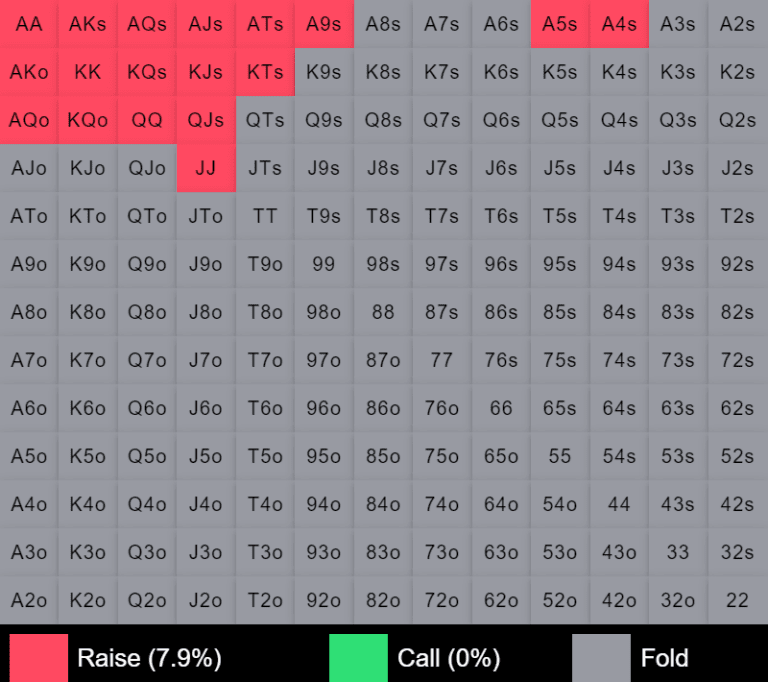
We do not have a default calling range in HJ vs LJ raiser. There are several players left to act after us, and we might become out of position versus a raiser.
Call CO vs LJ
Hands in range: 0%
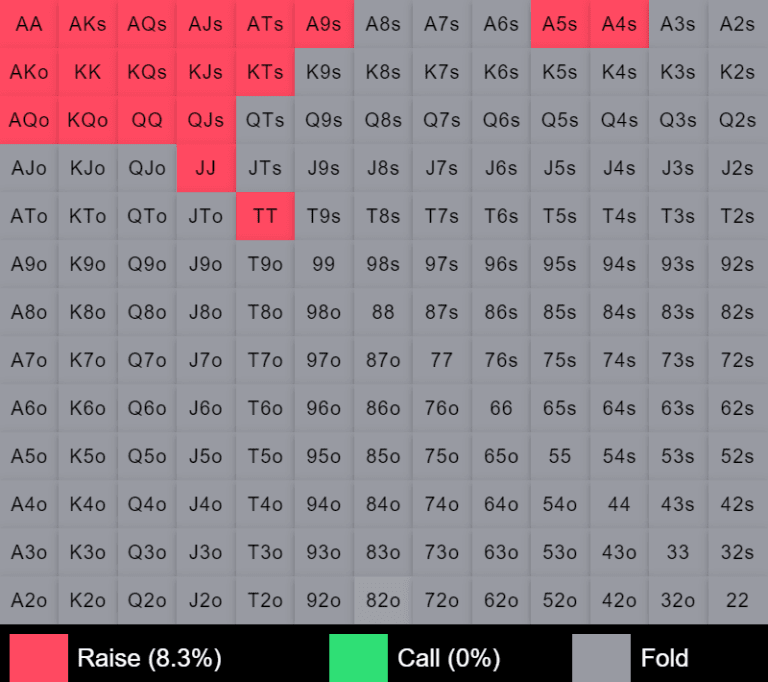
We do not have a default calling range in CO vs LJ raiser. There are several players left to act after us, and we might become out of position versus a raiser.
Call BTN vs LJ
Hands in range: 4.2%
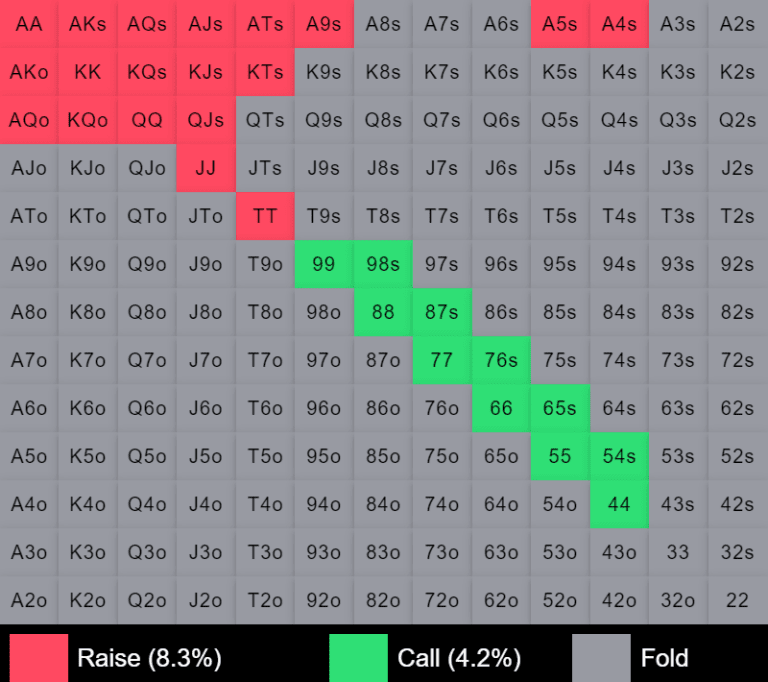
Call SB vs LJ
Hands in range: 0%
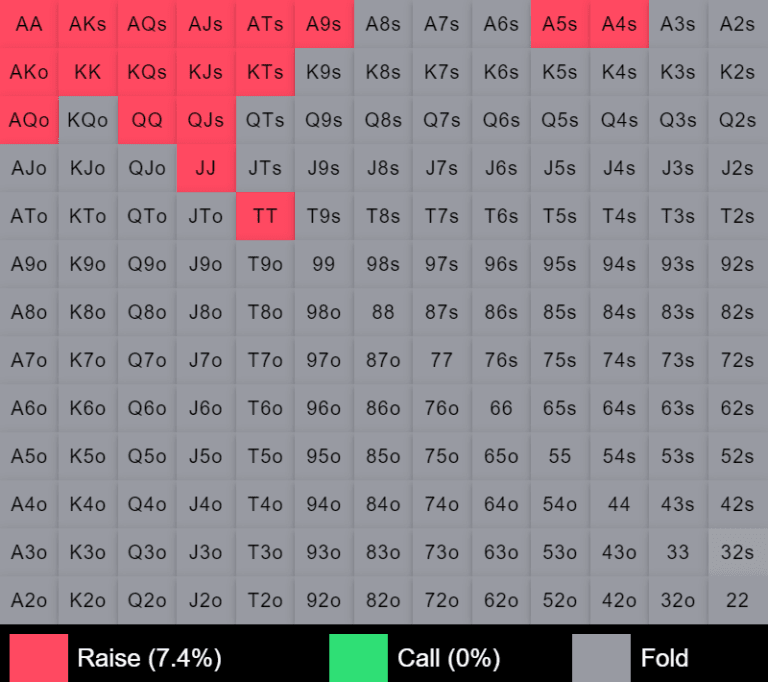
We do not have a default calling range in SB vs LJ raiser. If BB raises we will be out of position, and our range will be seen as relatively weak. As you will see when we go through the rest of the positions, we do not have a default calling range in SB in any scenario.
Call BB vs LJ
Hands in range: 18.4%
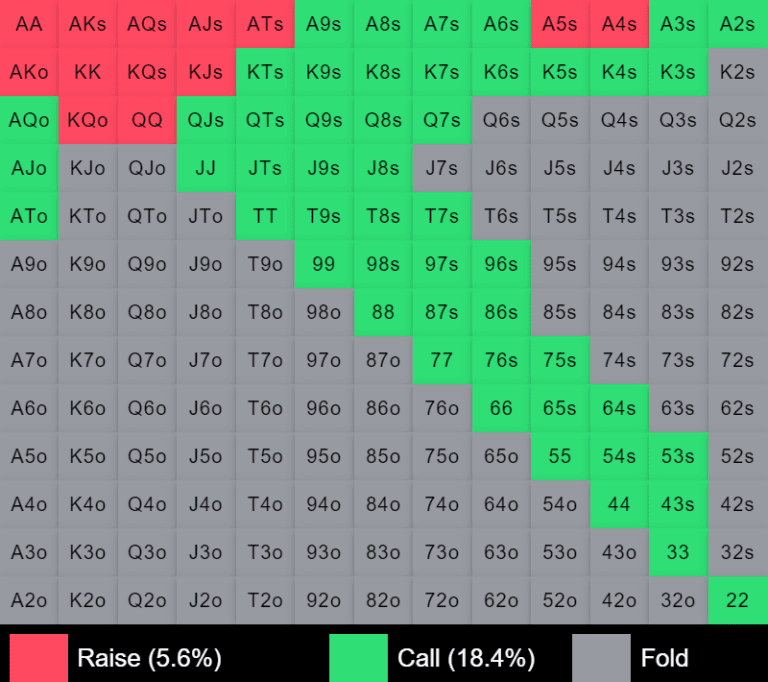
Call CO vs HJ
Hands in range: 0%
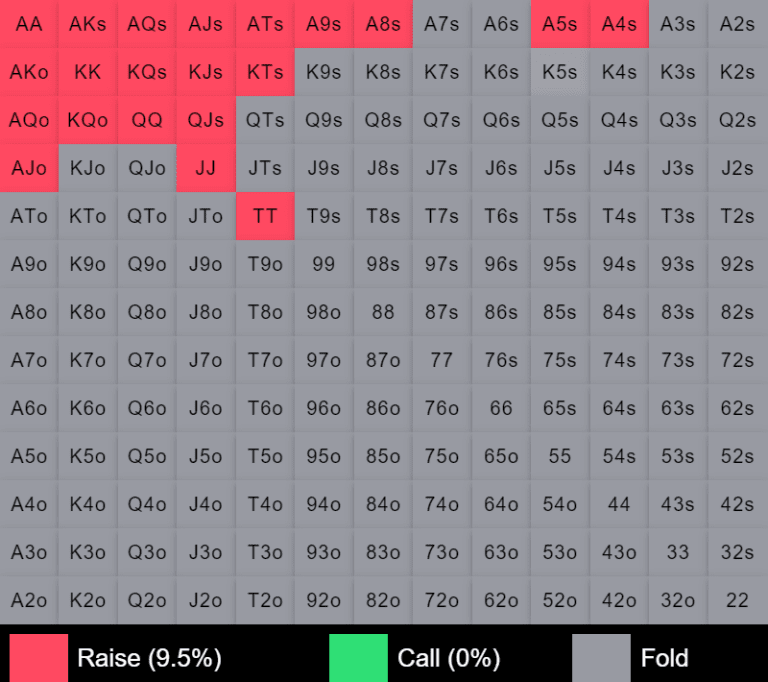
We do not have a default calling range in CO vs HJ raiser. There are several players left to act after us, and we might become out of position versus a raiser.
Call BTN vs HJ
Hands in range: 3.2%

Call SB vs HJ
Hands in range: 0%
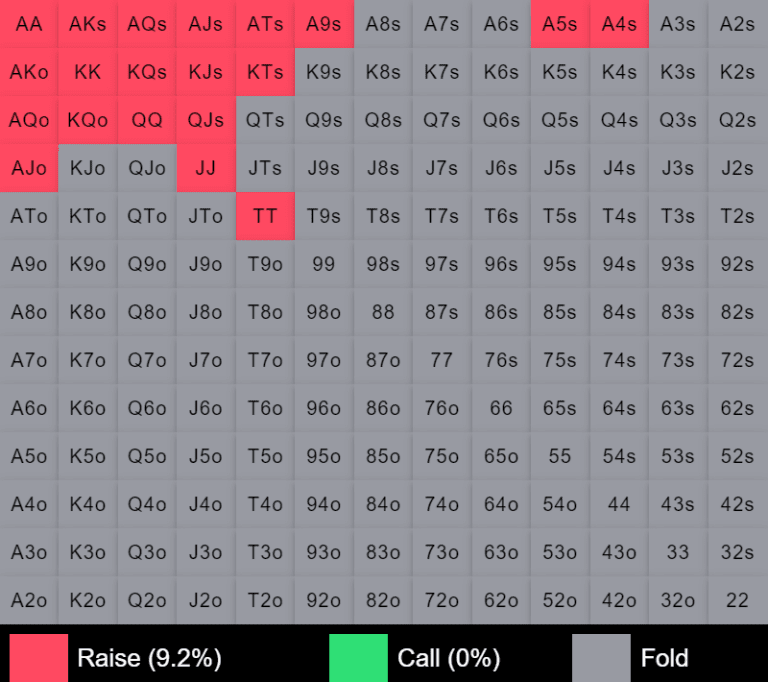
We do not have a default calling range in SB vs HJ raiser. If BB raises we will be out of position, and our range will be seen as relatively weak. As you will see when we go through the rest of the positions, we do not have a default calling range in SB in any scenario.
Call BB vs HJ
Hands in range: 19.5%
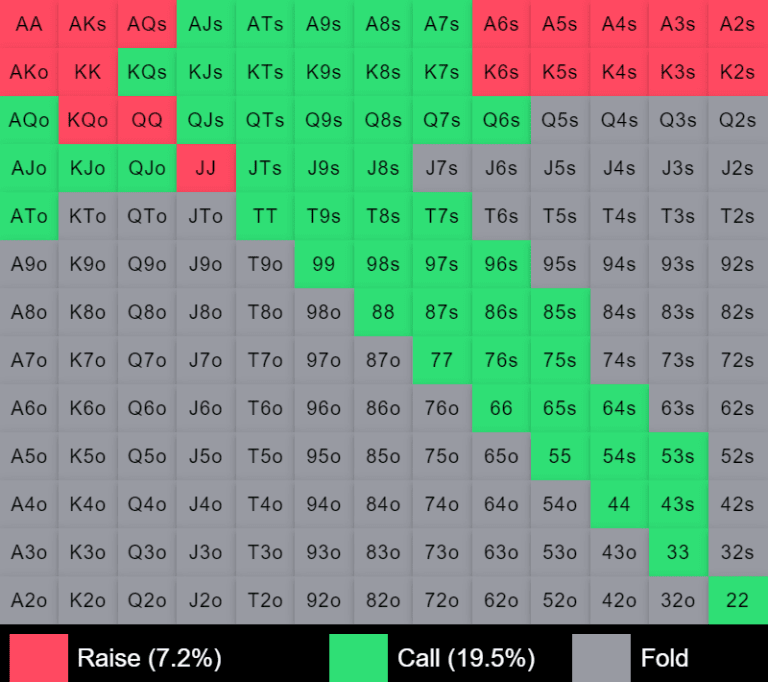
Call BTN vs CO
Hands in range: 2.3%

Call SB vs CO
Hands in range: 0%

Call BB vs CO
Hands in range: 21.9%
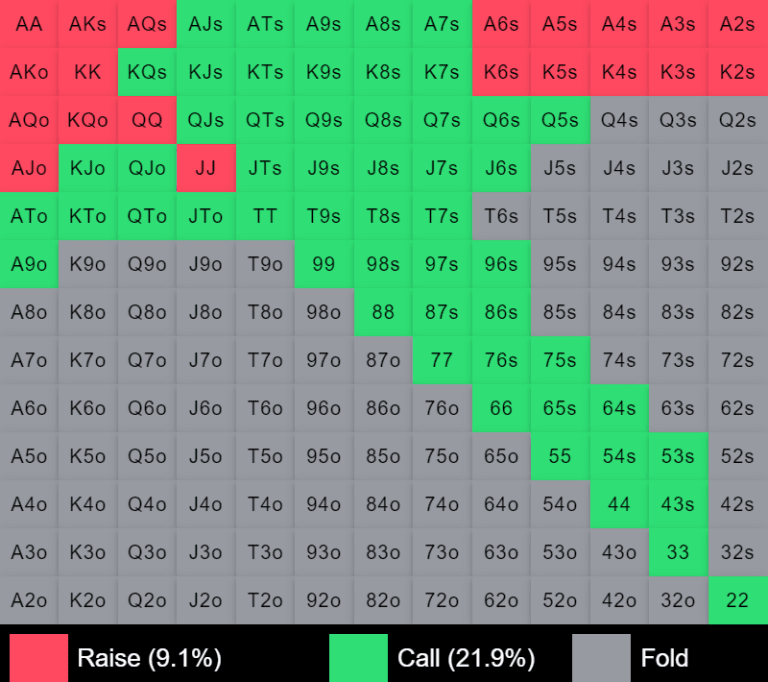
Call SB vs BTN
Hands in range: 0%
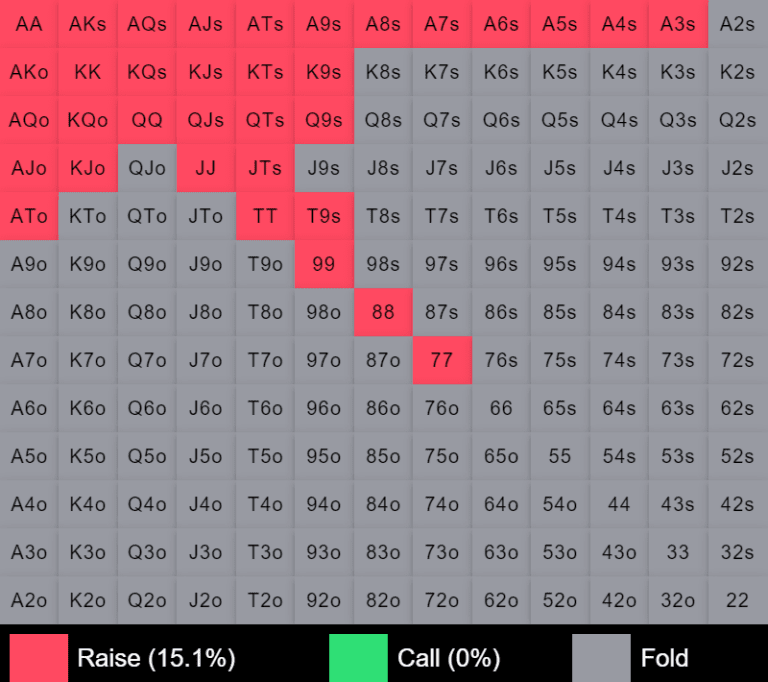
We do not have a default calling range in SB vs BTN raiser. If BB raises we will be out of position, and our range will be seen as relatively weak. As you will see when we go through the rest of the positions, we do not have a default calling range in SB in any scenario.
Call BB vs BTN
Hands in range: 25.8%
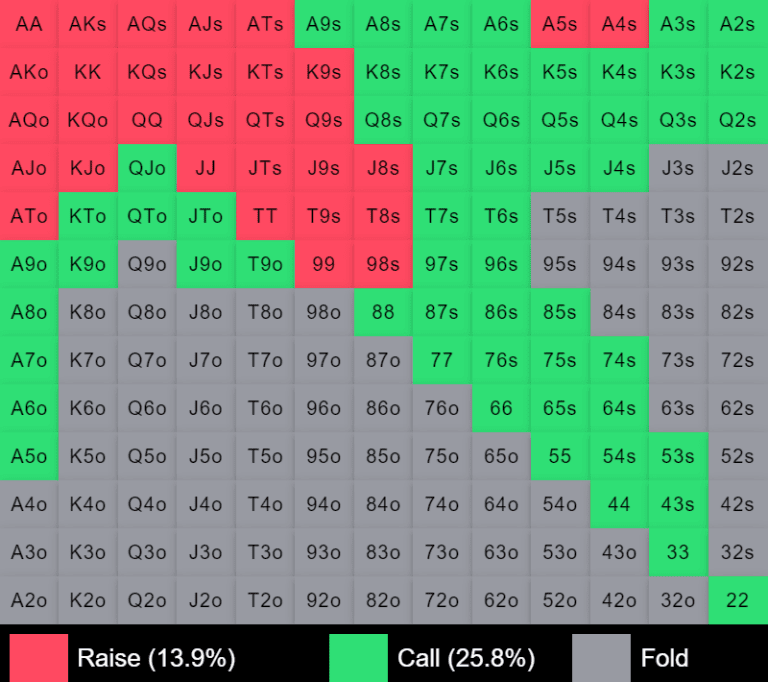
Call BB vs SB
Hands in range: 35%
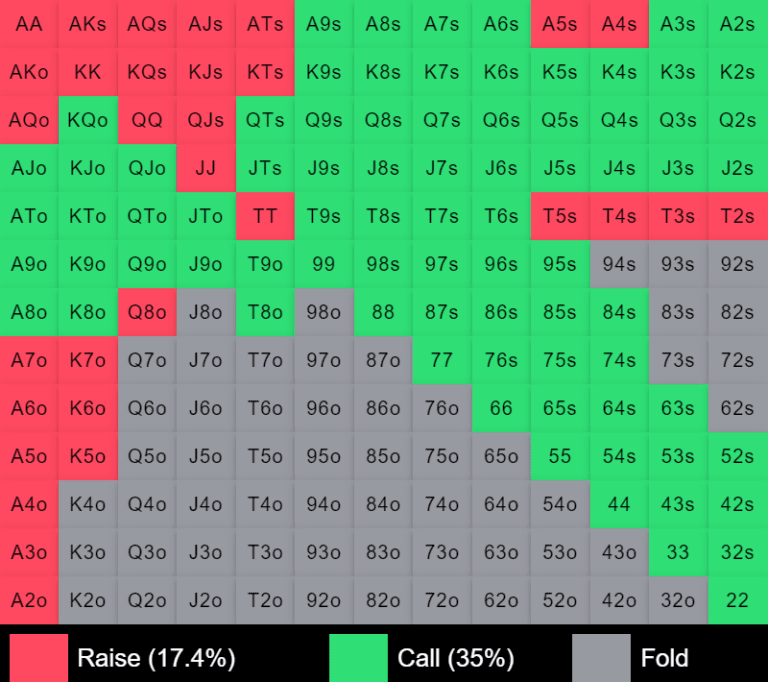
As you can see, we are defending with a very wide range in BB vs SB. We call with 35% of all hands, and we 3-bet with 17% (as you will see later). This means we are fighting back SB with half of our hands (which is a lot more than what many players are doing). We know SB is on a fairly wide range, and we will be in position, which makes it profitable for us to fight back with many hands. In general, it is very important to actively defend BB. If we fold and give up all the time, the blinds will become very expensive.
For some players the loss rate in the blinds is what is holding them back from becoming really strong winners. You will however always be losing in the blinds over a large sample, so that in itself is normal. But you need to be very active in minimizing your losses. A reason you can call quite a lot in BB even when you are out of position, is that you usually get good pot odds.
For example, if you are facing one opponent in HJ who has raised to 2.5 BB there will be 4 BB in the pot, and you only need to pay 1.5 BB to see the flop. That is better than 2.5 to 1 in odds (see the odds exercise), which means you only have to win 29% of the hands to break-even (assuming wins and losses are of the same size).
Continue to opening ranges and 3-betting ranges.



